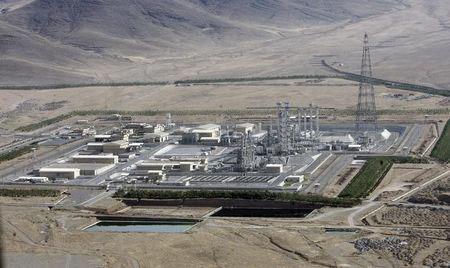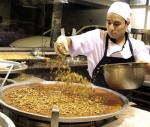TEHRAN — Iran laid out “red lines” Monday related to its ballistic missile programme, nuclear sites and uranium enrichment ahead of fresh nuclear talks with world powers.
President Hassan Rouhani insisted Iran was “serious” about the negotiations, as his negotiators warned they would not back down on some of the thorniest issues of the decade-long dispute.
Negotiations are set to resume in Vienna on February 18 and 19 between Iran and the so-called P5+1 — Britain, France, the United States, Russia and China plus Germany.
Building on a breakthrough interim deal reached in November, negotiators hope to eventually reach a comprehensive accord to allay international concerns that Iran is seeking a nuclear weapons capability, allegations denied by Tehran.
Iran made progress in separate but parallel negotiations over the weekend with the UN nuclear watchdog by agreeing to divulge information that could shed light on allegations of possible past weapons research.
Under a deal reached in Tehran with the International Atomic Energy Agency (IAEA), Iran will explain its need for sophisticated detonators that could be used to initiate a nuclear chain reaction.
But on Monday deputy foreign minister Abbas Araqchi, who is also a senior Iranian nuclear negotiator, said “the defence-related issues are a red line for Iran”.
“We will not allow such issues to be discussed in future talks,” he said.
The US lead negotiator in the talks, Wendy Sherman, last week told a Senate hearing that Iran’s ballistic missile programme would be addressed in the comprehensive deal.
The missile programme — targeted by UN Security Council sanctions — worries Western powers, as Iran boasts long-range missiles with a maximum range of 2,000 kilometres, enough to reach Israel.
Sherman also argued that Iran does not require an unfinished heavy water reactor in Arak — which could one day produce plutonium as a by-product — nor the underground Fordo uranium enrichment site for its civilian nuclear programme.
But another Iranian nuclear negotiator, Majid Takhte Ravanchi, on Monday reiterated that Iran would not accept the closure of “any of its nuclear sites”.
The Arak site is of international concern because Iran could theoretically extract weapons-grade plutonium from spent fuel if it also builds a reprocessing facility.
Last week, nuclear chief Ali Akbar Salehi said Iran could make changes to Arak’s design to produce less plutonium and “allay the worries”.
‘Lack of trust’
Salehi has also said Iran would refuse to give up enrichment to 20 per cent, a few technical steps short of weapons-grade material.
Supreme leader Ayatollah Ali Khamenei, who has the final say on key state matters, “has said that Iran should not give up its right to enrich [uranium] to 20 per cent,” Salehi said.
Salehi also announced the development of a new type of centrifuge “15 times more powerful” than those currently being used to enrich uranium.
The November deal stipulates that Tehran stops 20 per cent enrichment for six months while transforming its current stockpile into a form that is more difficult to refine.
Foreign Minister Mohammad Javad Zarif, Iran’s top negotiator, said Monday the talks in Vienna would be “difficult”, while anticipating that a framework for future negotiations would be discussed.
“The biggest challenge is the lack of trust,” he added.
Tehran-based analyst Mohammad Ali Shabani said the progress in talks with the IAEA may help smooth the negotiations with the P5+1.
“The new agreement is a good indicator that Iran is serious in its commitment to a political solution to the nuclear issue and is indeed ready to resolve all outstanding issues with the IAEA,” Shabani told AFP.
The Vienna-based UN watchdog seeks to probe allegations that Iran’s nuclear work prior to 2003, and possibly since, had “possible military dimensions”.
IAEA chief inspector Tero Varjoranta said Monday Tehran’s promise to provide “information and explanations” for the development of Exploding Bridge Wire detonators was only a “first step”.
These detonators can have non-nuclear applications, the IAEA said in a November 2011 report, but are mainly used in weapons research, making Iran’s stated development of them a “matter of concern”.
The 2011 report detailed information made available to the IAEA, much of it thought to have been provided by Western and Israeli intelligence, about “possible military dimensions” of Iran’s programme.















